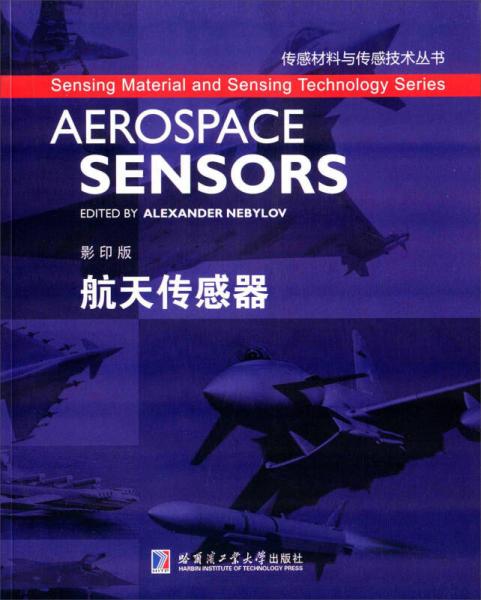內容簡介
根據作者40多年來從事航空—航天飛行器結構試驗和應變測量技術的體會,收集了國內外相關資料,以詞目的形式彙編成冊,以供從事航空—航天飛行器結構試驗和應變測量技術,以及相應的工程結構試驗和應變測量的各類技術人員參考。
圖書目錄
SERIES PREFACE
PREFACE
ACKNOWLEDGMENTS
ABOUT THE SERIES EDITOR
ABOUT THE EDITOR
1 INTRODUCTION
1.1 General Considerations
1.1.1 Types of Aerospace Vehicles and Missions
1.1.2 The Role of Sensors and Control Systems in Aerospace
1.1.3 Specific Design Criteria for Aerospace Vehicles and their Sensors
1.1.4 Physical Principles Influencing Primary Aerospace Sensor Design
1.1.5 Reference Frames Accepted in Aviation and Astronautics
1.2 Characteristics and Challenges of the Atmospheric Environment
1.2.1 Components of the Earth's Atmosphere
1.2.2 Stationary Models of the Atmosphere
1.2.3 Anisotropy and Variability in the Atmosphere
1.2.4 Electrical Charges in the Atmosphere
1.2.5 Electromagnetic Wave Propagation in the Atmosphere
1.2.6 Geomagnetism
1.2.7 The Planetary Atmosphere
1.3 Characteristics and Challenges of the Space Environment
1.3.1 General Considerations
1.3.2 Near—Earth Space
1.3.3 Circumsolar (Near—Sun) Space
1.3.4 Matter in Space
1.3.5 Distances and Time Scales in Deep Space
References
2 AIR PRESSURE—DEPENDENT SENSORS
2.1 Basic Aircraft Instrumentation
2.2 Fundamental Physical Properties of Airflow
2.2.1 Fundamental Airflow Physical Property Definitions
2.2.1.1 Pressure
2.2.1.2 Air Density
2.2.1.3 Temperature
2.2.1.4 Flow Velocity
2.2.2 The Equation of State for a Perfect Gas
2.2.3 Extension o fDefinitions: Total, Dynamic, Static, and Stagnation
2.2.4 The Speed of Sound and Mach Number
2.2.4.1 The Speed of Sound
2.2.4.2 Mach Number and Compressibility
2.2.5 The Source of Aerodynamic Forces
2.3 Altitude Conventions
2.4 Barometric Altimeters
2.4.1 Theoretical Considerations
2.4.1.1 The Troposphere
2.4.1.2 The Stratosphere
2.4.2 Barometric Altimeter Principles and Construction
2.4.3 Barometric Altimeter Errors
2.4.3.1 Methodical Errors
2.4.3.2 Instrumental Errors
2.5 Airspeed Conventions
2.6 The Manometric Airspeedlndicator
2.6.1 Manometric Airspeedlndicator Principles and Construction
2.6.2 Theoretical Considerations
2.6.2.1 Subsonic Incompressible Operation
2.6.2.2 Subsonic Compressible Operation
2.6.2.3 Supersonic Operation
2.6.3 Manometric Airspeed Indicator Errors
2.6.3.1 Methodical Errors
2.6.3.2 Instrumental Errors
2.7 The Vertical Speed Indicator (VSI)
2.7.1 VSI Principles and Construction
2.7.2 Theoretical Considerations
2.7.2.1 Lag Rate (Time Constant)
2.7.2.2 Sensitivity to Mach Number
2.7.2.3 Sensitivity to Altitude
2.7.3 VSI Errors
2.8 Angles of Attack and Slip
2.8.1 The Pivoted Vane
2.8.2 The Differential Pressure Tube
2.8.3 The Null—Seeking Pressure Tube
References
Appendix
3 RADAR ALTIMETERS
3.1 Introduction
3.1.1 Definitions
3.1.2 Altimetry Methods
3.1.3 General Principles of Radar Altimetry
3.1.4 Classification by Different Features
3.1.5 Application and Performance Characteristics
3.1.5.1 Aircraft Applications
3.1.5.2 Spacecraft Applications
3.1.5.3 Military Applications
3.1.5.4 Remote Sensing Applications
3.1.6 Performance Characteristics
3.2 Pulse Radar Altimeters
3.2.1 Principle of Operation
3.2.2 Pulse Duration
3.2.3 Tracking Altimeters
3.2.4 Design Principles
3.2.5 Features of Altimeters with Pulse Compression
3.2.6 Pulse Laser Altimetry
3.2.7 Some Examples
3.2.8 Validation
3.2.9 Future Trends
3.3 Continuous Wave Radar Altimeters
3.3.1 Principles of Continuous Wave Radar
3.3.2 FMCW Radar Waveforms
3.3.3 Design Principles and Structural Features
3.3.3.1 Local Oscillator Automatic Tuning
3.3.3.2 Single—Sideband Receiver Structure
3.3.4 The Doppler Effect
3.3.5 Alternative Measuring Devices for FMCW Altimeters
3.3.6 Accuracy and Unambiguous Altitude
3.3.7 Aviation Applications
3.4 Phase Precise Radar Altimeters
3.4.1 The Phase Method of Range Measurement
3.4.2 The Two—Frequency Phase Method
3.4.3 Ambiguity and Accuracy in the Two—Frequency Method
3.4.4 Phase Ambiguity Resolution
3.4.5 Waveforms
3.4.6 Measuring Devices and Signal Processing
3.4.7 Remarks on the Accuracy of CW and Pulse Radar Altimeters
3.5 Radioactive Altimeters for Space Application
3.5.1 Motivation and History
3.5.2 Physical Bases
3.5.2.1 Features of Radiation
3.5.2.2 Generators of Photon Emission
3.5.2.3 Receivers
3.5.2.4 Propagation Features
3.5.3 Principles of Operation
3.5.4 Radiation Dosage
3,5.5 Examples of Radioisotope Altimeters
References

